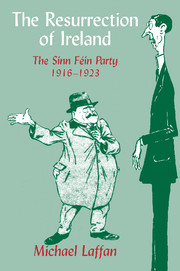1 - Irish nationalists: politicians and rebels
Published online by Cambridge University Press: 05 March 2012
Summary
On 16 June 1904, as Leopold Bloom walked the streets of Dublin, he paused to browse in a bookshop at Merchant's Arch. Nearby, in a small cluttered room at the back of a house on Fownes Street, the author of a bizarre political tract was nearing the end of his labours. Between 2 January and 2 July, Arthur Griffith's The resurrection of Hungary made its first appearance as a series of articles in the columns of his weekly newspaper, the United Irishman. It was a strange manifesto. By Bloomsday twenty-four of its twenty-seven instalments had already been published, but although Griffith had provided a massively detailed treatment of Austro-Hungarian relations in the mid-nineteenth century he had, so far, barely mentioned Ireland. Nonetheless The resurrection became for many years the bible of the Sinn Féin party which Griffith dominated for over a decade, and with which he remained closely associated for the rest of his life. Not only did its final chapter lay down a blueprint for a political programme, part of which would be implemented many years later, but its very title hints at images that inspired radical Irish nationalism.
By the early twentieth century most Irish people were prepared to exploit the opportunities provided by their citizenship of the United Kingdom.
- Type
- Chapter
- Information
- The Resurrection of IrelandThe Sinn Féin Party, 1916–1923, pp. 3 - 40Publisher: Cambridge University PressPrint publication year: 1999



